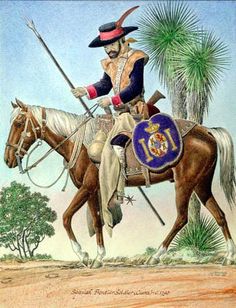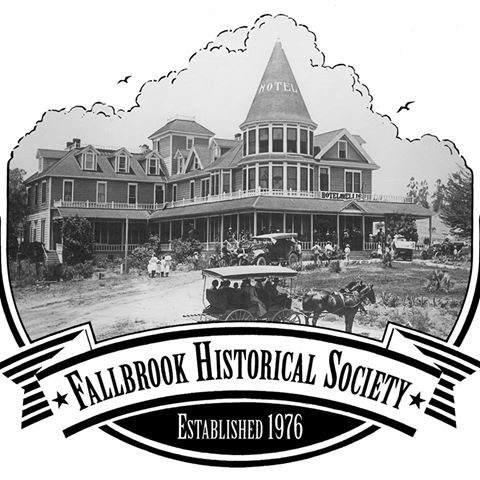The Fallbrook Historical Society has new information on this controversial topic.
Long before American settlers came to this area, there was a small adobe house, about 12 square feet, on the point of a hill near a stream. Cattle from the adjoining Rancho used to range over this area because Pio Pico and later Don Juan Forster, believed that the valley between the Santa Margarita and the Santa Rosa Mountains were part of Rancho Santa Margarita. Vaqueros said a Spaniard or Californian by the name of Jose de Luz had built a corral and kept stock in there at one time. An American settler, A.J. Foss, said there were still a few stubs of posts of corral around the adobe in 1877. This place was known as Corral de Jose de Luz. (1)
The earliest known documentation of the name De Luz locally was on a map dated 1878 of Rancho Santa Margarita (today’s Camp Pendleton) that designated this stream as the Arroyo Corral de la Luz. (2)
Downstream, where the arroyo emptied into the Santa Margarita River, the California Southern railroad built a station in 1882, shortening the name to De Luz. A post office was contained in the station. Following the establishment of the De Luz Post office here, settler homestead records of the 1880s were signed and dated as being in De Luz. (3)
A False Story
For many years an unsubstantiated story has persisted that De Luz was named after an Englishman named Luce who kept a string of horses in a corral at Judson’s hotel near the hot springs in the canyon, as reported in the 1983 History of San Bernardino and San Diego Counties This report cannot be true. The first problem is Luce is not De Luz. Most importantly, this place was known by Californios as the Corral de Jose de Luz and documented by Americans as De Luz many years before Mr. Luce visited the hotel that Mr. Lemon Judson built in the 1880s. (4)
The Fallbrook Historical Society has often reported the Corral de la Luz story, based on a written statement from an old timer named A.J. Foss. Now the identity of this ‘old timer’ is better understood. Albert J. Foss, was the son of a pre-1870 settler in San Luis Rey. Albert Foss’ family grew up as neighbors to Jose Antonio Pico and his family. Jose Antonio was a brother to the former California governor Pio Pico and the original owner of Rancho Santa Margarita. A.J. married Harriet Neff of West Fallbrook. The Neff who kept sheep and camped at the old adobe in the 1870s was Millard Neff, A.J’s brother in law. Also, Orlando Stewart, the American who first homesteaded this spot and planted a vineyard here, had married A.J’s older sister Florence, so he was another brother in law. A.J. Foss had family in this place, he knew the people, and he spoke with Forster’s vaqueros. We ought to trust his report.
A Californio named Jose de la Luz


The name Jose de la Luz was not uncommon. We looked at several Jose de la Luz’s, but only one fits the time and place. We do not have proof, but a California born Spanish soldier of mixed blood who traveled around Southern California from Monterey, to San Diego to San Gabriel, uniquely meets the vaqueros’ description of a “Spaniard or Californian” who could have built this corral before 1850. His name was Jose de la Luz Linares. He was born at the Mission San Antonio de Padua, a short distance from Monterey on the El Camino Real on 20 January 1800. (5) When he became of age, Jose de la Luz Linares followed in the footsteps of his father, Salvador Linares, to become a leatherjacket soldier (soledado cuero). (6)
Jose de la Luz Linares married Maria de Jesus Bruno Garcia at the Presidio in San Diego on 19 July 1819 where he was stationed. Soon thereafter, in 1821, Mexico became independent from Spain. Although a soldier of Spain, Jose de la Luz Linares naturally chose to remain in California where he had always lived, and become a Mexican citizen.
We do not know what Jose de la Luz did immediately following his release from military service (about 1829?). Perhaps he tried ranching in the 1830s along the Santa Margarita River. We do know that in 1840, as part of the secularization movement to distribute Spanish church lands, Governor Juan Alvarado deeded to Jose de la Luz Linares 4,340 acres, presumably as a reward for his military service, and possibly for his support for Mexican Independence. With his new property, Jose de la Luz Linares founded the Rancho Los Nogales, just 70 miles from today’s De Luz. The City of Diamond Bar is located on that site today. (7) Life was hard and short in those days. Jose de la Luz Linares died at Mission San Gabriel in September 1846.
Tom Frew , FHS historian
References:
(1) Statements by A.J. Foss on file at the Fallbrook Historical Society.
(2) Reported by Floyd Markham, former historian of Fallbrook Historical Society.
(3) Homestead Records of De Luz on file at Fallbrook Historical Society.
(4) History of San Bernardino and San Diego counties, California, W. W. Elliott, 1883, pg 198.
(5) The Journal of San Diego History (Summer/Fall 2017) ‘Overlooked by Historians: Salvador Linares and the Perils of Frontier California’ by Robert A. Kittle.
(6) Reyes y Diaz families of Early California, Mexico, & Spain: Information about Jose De La Luz Linares.
(7) City of Diamond Bar History https://www.diamondbarca.gov/290/Our-History
